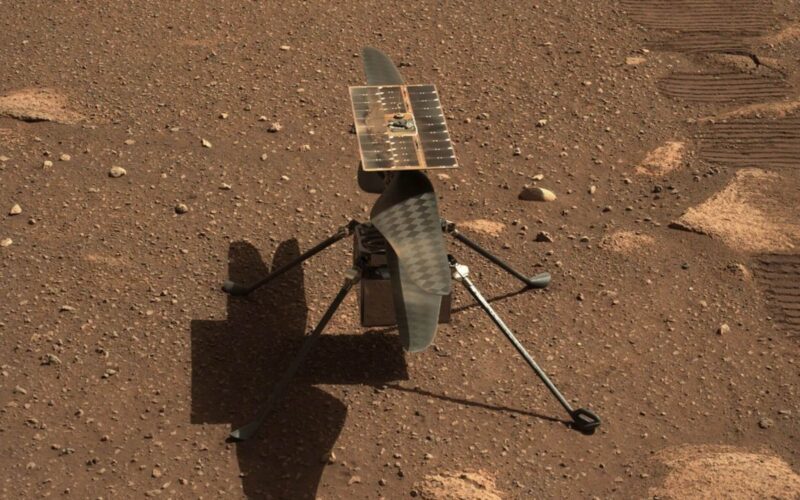Ingenuity, the helicopter sent to Mars in 2021, is being prepared to survive a harsh Martian winter, NASA revealed.
In the onset of the cold season, the aircraft broke yet another record by conducting a 161-second-long flight on April 8, 2022. The recording of the flight was released by NASA in the end of May.
An aerial view from Mars.
During #MarsHelicopter’s 25th flight, it flew 2,310 ft (704 m) at a speed of 12 mph (5.5 m/s), breaking its own distance and groundspeed records on another planet. Imagery recently downlinked shows Ingenuity’s point of view. https://t.co/NU5d6wGSdE pic.twitter.com/IqgkEmR04W— NASA JPL (@NASAJPL) May 28, 2022
It has been Ingenuity’s longest and fastest flight to date, as the aircraft covered 704 meters (2,310 feet) and reached the speed of 5.5 meters per second (12 miles per hour).
When launched together with the Perseverance rover in 2020, Ingenuity was expected to conduct just five flights and survive several cold nights in the harsh Martian atmosphere. It has now conducted 25 flights and has been active for hundreds of sols (Martian days – ed. note).
Since its first flight in April 2021, the helicopter broke its own records numerous times, in addition to being the only aircraft to take off on another planet. However, after operating for half of a Martian year, Ingenuity is bound to run into its most difficult challenge yet: Martian winter.
The seasonal change brings extreme temperatures and an increase in atmospheric dust density, which spells trouble for the solar-powered machine. The energy gathered during the day is used not only for flying, but also for keeping the aircraft’s components from freezing during the night. This design is becoming more and more difficult to sustain, NASA admits.
Following its last flight, the aircraft’s communications broke down for the first time on May 3 and 4, 2022. After reestablishing the link a day later and conducting an investigation, scientists found out that the aircraft has powered itself down due to the lack of charge in its batteries.
The increase of sun-obscuring dust meant that Ingenuity could not sustain its normal operations. Shutting down desynchronized its internal clock, and the aircraft was unable to properly communicate with the Perseverance rover.
Similar problems are going to become more and more frequent in the Martian winter. The temperature of Ingenuity’s components will fall to the ambient –80 °C (-112 °F), way under the -25 °C (-13 °F) they were designed to operate in.
NASA cannot predict if all the components will survive such a freeze. Cold weather has already claimed two of the five NASA’s Martian rovers: both Spirit and Opportunity, sent to Mars in 2003-2004, “died” during a Martian winter in, respectively, 2011 and 2018. Opportunity’s last message was the iconic “My battery is low and it’s getting dark.”
As the temperatures decrease, NASA will try keeping the aircraft alive, adapting to its ever-shifting internal clock, regularly checking its airworthiness and conducting scouting flights whenever possible.
Martian winter solstice is going to come in July, and by October Ingenuity should be receiving enough sunlight to keep its internal components warm again. However, it is unclear if the aircraft will fare that long.
“The solar-powered helicopter is in uncharted terrain. We are now operating far outside our original design limits,” Teddy Tzanetos, Ingenuity Team Lead at NASA’s Jet Propulsion Laboratory, explains. “Each sol could be Ingenuity’s last.”

